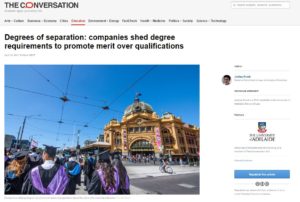Today saw the release of the 2017 Australian Digital Inclusion Index, which can be downloaded from the Telstra Sales Portal Digital Inclusion website. The report had some positive, although expected, conclusions in that digital inclusion is increasing right across the board, which is the good news. What caught my eye however were the specific mentions of the sociodemographic groups which are the most digitally excluded across the country, specifically:
“…people in low income households, people aged 65+, people with a disability, people who did not complete secondary school, Indigenous Australians, and people not in paid employment.”


 It was
It was 